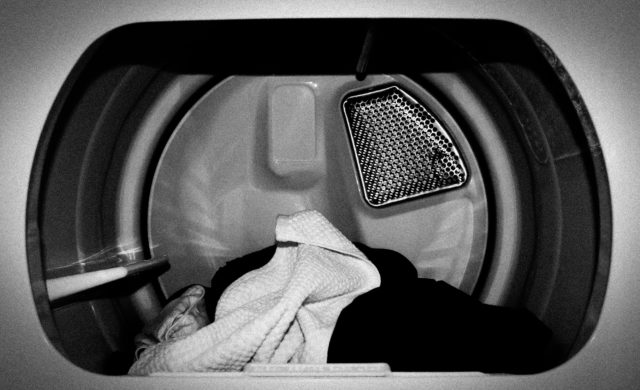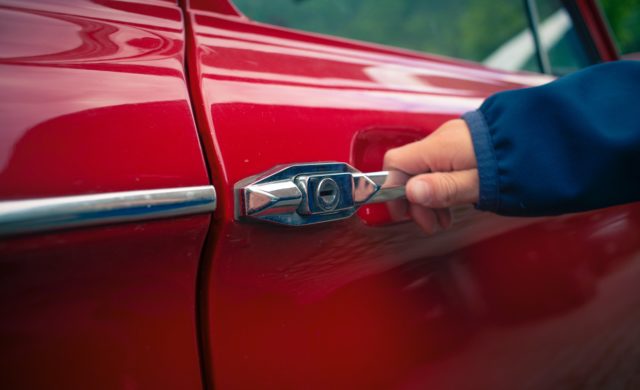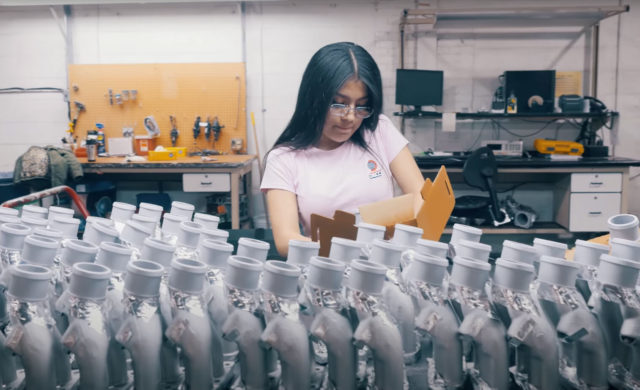Last week our post detailed the various “soft-touch” coating application methods available in the industry. Those types of processing methods are absolutely required if a consistent, smooth, and relatively blemish free surface finish is required. Also, with certain part geometries, they are the only option available to ensure a quality coated component.
However, just as much as there are components that require such processing, there are just as many that do not. In the same regard, there are part geometries that simply cannot be coated utilizing the aforementioned methods either.
In those cases, a dip-spin, tilt-tumble, or tumble-spray bulk application method are efficient ways of applying coating to such components.
Dip-Spin and Tilt-Tumble
For over half a century, dip-spin coating has been a cost-effective and efficient way of applying functional coatings to small parts such as fasteners, springs and certain types of metal stampings. Below are examples of components that are very well suited for dip-spin coating. Small screws and other fasteners are also ideal for dip-spin coating but are not pictured below.

Part types well suited for bulk coating applications.
In a dip-spin coating process, parts are loaded into a perforated basket and then submerged into the coating. After complete submersion, the basket is removed from the coating and spun at a high rate of speed which removes excess coating by means of centrifugal force. Parts are then loaded on a conveyor and cured. This process is repeated as many times as needed to hit the desired coating thickness.
Tilt tumble follows almost exactly the same process flow. However, a tilt tumble machine offers one additional feature that a standard dip-spin machine does not: the tilt.
A tilt tumble machine can tilt the basket up to 90 degrees in either direction and even while the basket is rotating. The tilting capability not only forces coating into small part recesses, such has socket heads, Phillips drives, internal hex and torque drives, but removes excess coating that could result in assembly issues due to paint buildup.
Below is an informational video from Magni on the dip-spin and tilt-tumble process.
Dip-spin and tilt-tumble are a fast and efficient way to coat the right type of parts, but should not be used for parts with deep or “blind” cavities, flat or mostly flat parts that could nest together, or parts with multiple bends or protrusions that could become interlocked or chained together during processing.
Tumble-Spray
We posted a blog a couple weeks ago on DECC’s tumble spray process. To gain a deep dive into its advantages, check it out here.
In short, tumble spray is ideal for non-metallic components, such as O-rings, large and small gasket seals, bumper bolts, grommets, etc. Typically, the ideal choice to be utilized in a tumble spray unit would be coatings for non-stick release or those that are rich in graphite or molydisulfide. Small springs or very small metal stampings needing dry-film lubrication and not requiring extensive corrosion resistance can be successfully coated via tumble spray as well.
In Conclusion
To sum up our two-part series, part geometry surface finish requirements are the two most important factors that drive which coating application method should be utilized.
As mentioned numerous times, DECC applies coatings to 99% of the components we process via the rack-spray method. Because of this, we refer a significant amount of leads that come our way to dip-spin applicators because it does neither party any good if we try to sign up for a coating application that does not fit into our process.
If you need input as to which coating application would be the best fit for your component, contact us today. If the application method is not something we can provide, we will point you to a company that can help.
Related Articles

Reduce Plastic Sticking with Dryer Panel Coatings
DECC SOLVES PROBLEM OF PLASTIC STICKING TO DRYER PANELS

Coatings for a Quiet Ride
As cars have gotten quieter and quieter over the years, auto makers have...

Dip Spin vs. Rack Spray – Why Not Both?
When it comes to the application of liquid-based functional coatings, there are two...

